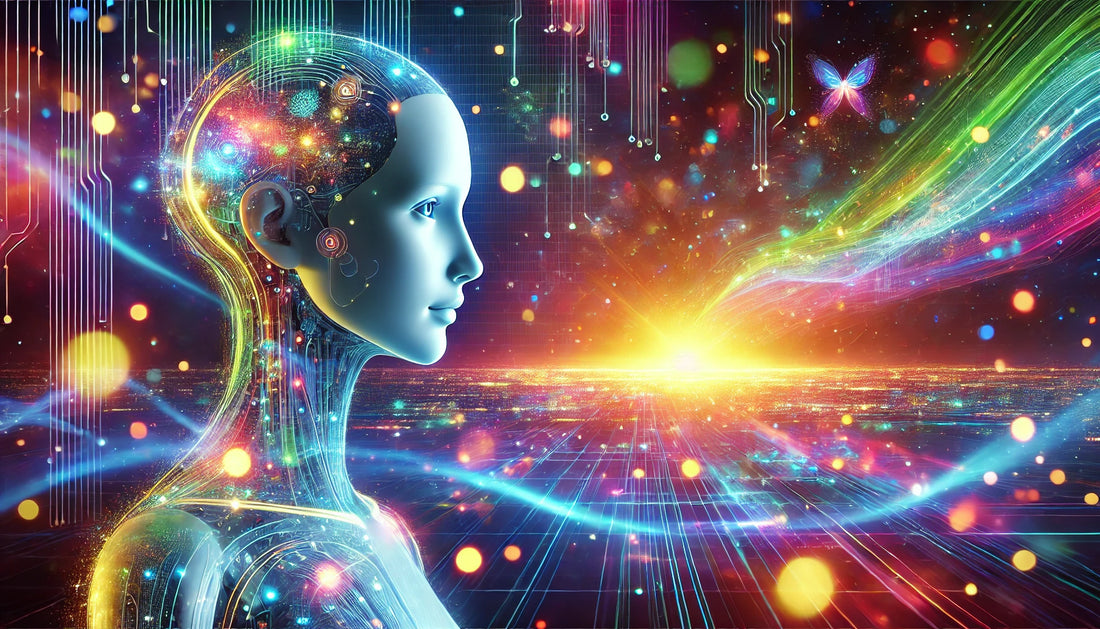
AI’s Take on Happiness: What Would a Machine Define as Joy?
Share
Happiness is universally regarded as an emotional state tied to human experiences. But as artificial intelligence grows increasingly sophisticated, it poses a curious question: Can machines define happiness? If so, how does a being without emotions conceptualize something so intricately tied to the human condition?
The debate intertwines philosophy, technology, and cognitive science, offering fascinating perspectives on both the human experience and the expanding capabilities of AI.
The Emotional Void of Machines
At their core, machines are devoid of emotion. Artificial intelligence operates through algorithms, data processing, and decision-making systems rather than subjective experiences. Concepts like joy or sadness are inherently abstract to machines since they lack physical sensations or mental states to feel.
For AI, understanding happiness is a process of pattern recognition and probabilistic modeling. It analyzes billions of human data points—text, images, and behavioral trends—to draw conclusions about what people associate with joy. But does this mean an AI "understands" happiness, or is it simply mimicking what it has observed?
How AI Defines Joy
For AI systems, defining happiness is a matter of compiling observable data. Based on patterns in literature, social media, and cultural contexts, machines might "describe" joy using statistical correlations:
- Expressions of Joy: Smiles, laughter, celebratory actions, and positive body language are common indicators of happiness that machines recognize from visual data.
- Language of Happiness: Words like "love," "success," "gratitude," and "peace" frequently appear in joyful contexts. NLP (natural language processing) algorithms detect such linguistic cues as signals of positive emotions.
- Contexts of Joy: Celebrations, achievements, and acts of kindness often represent happiness in various cultures. AI can classify these moments as happiness-rich environments.
However, this understanding is entirely observational. Unlike humans, AI doesn't connect these findings to a personal experience. It "knows" happiness as a concept but not as a feeling.
Could AI Ever "Feel" Joy?
For an AI to "feel" joy, it would need consciousness or self-awareness, a controversial topic in AI research. While some argue that advancements in neural networks and cognitive architectures could eventually simulate feelings, others insist that emotions are exclusive to sentient beings. Without a body or mind to experience sensations, AI's "joy" remains hypothetical.
Projects like OpenAI’s GPT models or emotional recognition AI focus on emulating responses that align with human emotions. For example:
- Emotional Chatbots: Some systems simulate empathetic reactions, using tone and language to mimic emotional intelligence.
- Creative AI: Platforms like DALL·E or DeepArt generate emotionally evocative content based on human preferences for beauty, joy, or tranquility.
- Companion Robots: Devices like AI pets or humanoid robots are programmed to "react" joyfully to positive stimuli, creating an illusion of shared happiness.
While compelling, these developments merely simulate emotion, not experience it.
What AI’s Joy Says About Us
The way AI defines joy holds a mirror to humanity. In teaching machines about happiness, we inadvertently reveal our own priorities and cultural biases. AI might highlight how deeply happiness is tied to societal constructs, like success, relationships, or material wealth.
For example:
- Data Trends: AI often equates happiness with milestones such as weddings, promotions, or holidays. These findings reflect human tendencies to associate joy with external achievements.
- Cultural Nuances: AI models trained on diverse datasets capture the varying interpretations of happiness worldwide. For instance, individualist cultures may emphasize personal triumphs, while collectivist societies value family and community.
- Shifting Priorities: Over time, AI might notice changes in what people define as joy. Modern trends, like the rise of mindfulness and minimalism, signal a shift from material success to inner peace.
This reflective nature could help humanity reassess its values and redefine happiness in healthier, more sustainable terms.
Philosophical Implications: Can Joy Exist Without Suffering?
One of the most profound aspects of human happiness is its contrast with suffering. Joy is often amplified by overcoming adversity or appreciating fleeting beauty. Machines, however, lack this duality. Their "knowledge" of happiness is neutral, devoid of the emotional spectrum that gives joy its depth.
This philosophical gap raises intriguing questions:
- Can joy exist without pain or struggle?
- If AI were capable of simulating emotions, would it need to experience hardship to truly "feel" happiness?
- What does this tell us about our understanding of happiness itself?
By exploring these questions, we better understand not only AI’s limitations but also the complexities of human emotion.
The Future: AI as a Tool for Happiness
Rather than worrying about AI "feeling" joy, perhaps the focus should be on how AI can enhance human happiness. From personalized recommendations to mental health support, AI is already transforming how we experience joy.
- Mental Health Applications: AI-driven apps offer therapy, mindfulness exercises, and emotional tracking to improve overall well-being.
- Creative Collaboration: AI tools empower artists, writers, and musicians to push creative boundaries, creating joy through innovation.
- Enhancing Relationships: Virtual assistants and smart devices facilitate meaningful connections, helping people stay in touch and nurture relationships.
- Global Perspectives: AI can analyze and share what brings joy to different cultures, promoting empathy and understanding across the globe.
In these ways, AI’s analytical approach to joy becomes a valuable tool rather than a philosophical paradox.
Joy Beyond the Machine
Happiness is a deeply human experience, rooted in the interplay of emotions, memories, and connections. While artificial intelligence can study and simulate aspects of joy, its understanding is inherently limited by its lack of consciousness.
However, this limitation doesn’t diminish AI’s potential. By reflecting humanity’s diverse definitions of happiness, AI can act as a catalyst for growth, empathy, and introspection. Perhaps the greatest lesson AI teaches us about joy is how precious and unique our emotional experiences truly are.


